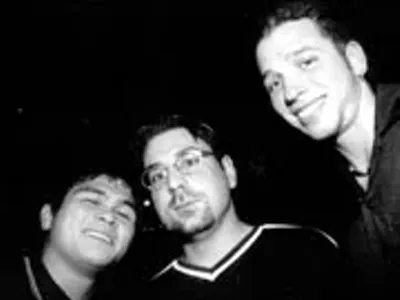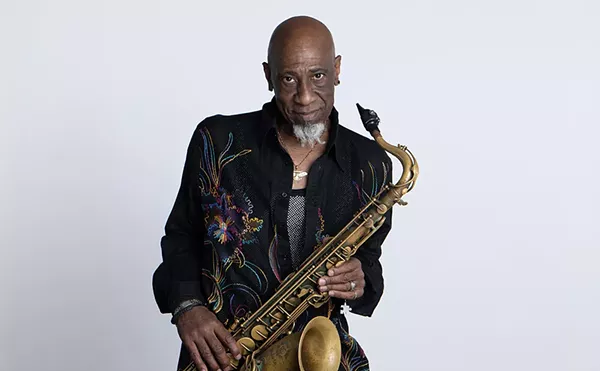
Audio By Carbonatix
[
{
"name": "GPT - Leaderboard - Inline - Content",
"component": "35519556",
"insertPoint": "5th",
"startingPoint": "3",
"requiredCountToDisplay": "3",
"maxInsertions": 100,
"adList": [
{
"adPreset": "LeaderboardInline"
}
]
}
]
Body art, that variant of performance art which utilizes the living human form, has been with us all along. From the 5,300-year-old frozen "Iceman" recently discovered high in the Italian Alps to the Tahitians encountered by Captain Cook in the 18th century, tattooing has been practiced across the globe from time immemorial. This is evidence of our apparently innate need to alter the appearance of our bodies, resulting in the transformation of flesh into a living canvas.
Tattooing has functioned in so-called "primitive" societies as a marker of personal identity, skill in battle or group affiliation. Located at the intersection of nature (body) and culture (form and pattern) -- at the crossroads of the sacred and profane -- tattoos exude a complex and powerful aura, which has been explored in many films.
Director Lee Tamahori's Once Were Warriors (1994) looks at a contemporary Maori family as it struggles to survive in a New Zealand urban wasteland. Dad Jake's extravagant sensuality is counterbalanced by his violent temper. Quick to anger, he terrorizes his family and anyone else who happens to get in his way, while embalming his woundedness in enough alcohol to fell a fraternity. Embattled mom Beth endures, rages, drinks and hopes for better.
As mom and dad alternately love, party and wage war, their kids drift off on their own. Their eldest son endures a brutal initiation into a street gang whose members sport a traditional form of Maori facial tattooing known as Moko, which consists of dark lines, curves and spirals etched in intricate patterns. Moko gave warriors an almost supernaturally frightening appearance, proved their capacity for withstanding pain and greatly enhanced their erotic appeal.
The first glimpse of gang members with these powerful tattoos is breathtaking. It says reams about the spiritual hunger of these young men as they reach back to their mostly forgotten heritage for something they can use to survive on the streets.
Japan is home to an extremely sophisticated tattooing tradition that dates back to the 5th century B.C. Characterized by rich, bright colors and the use of one integrated design that covers a large area of the body, these tattoos were frequently used for beautification or as a magical form of protection. In Irezumi (Spirit of Tattoo, 1983), a young woman's lover obsessively longs for her pristine white skin to be graced by a traditional tattoo, and she agrees to submit to the artistry of a renowned master tattooer. Unbeknownst to her lover, part of the deal is that she must agree to the unorthodox and kinky technique of the master, and the tattooing process becomes conflated with the transformative power of eroticism, its pain and pleasure inextricably intertwined.
In The Illustrated Man (1969), a film based on a tale by Ray Bradbury, Rod Steiger plays a half-mad bum covered with "skin illustrations" that act as visionary portholes into future realities. These forays into the future reflect the social preoccupations of the era in which the film was made, such as conflict between parents and children, rebellion against authority and a Cold War-induced anxiety concerning the imminent end of the world. Though the film fails to maintain its momentum, Steiger's mesmerizing performance complements Claire Bloom as the witchy tattoo artist who transforms Steiger's simple character into an unwilling prophet.
The Bounty, the 1984 retelling of the famous mutiny, pits Anthony Hopkins' rigid, disciplined Captain Bligh against Mel Gibson's passionate, sensual Fletcher Christian. All is well until the crew arrives in Tahiti, where Christian sheds his repressive Western cultural baggage to embrace the pleasure-oriented culture of the island paradise, an internal shift made evident by the rows of geometric tattoos the islanders apply about his waist. The pain of the fresh tattoos prevents Christian from donning his uniform, which causes the first breach in his relationship with Bligh and sets him on the path to mutiny.
The battle of the sexes reaches its nadir in Tattoo (1981), starring Bruce Dern as an unbalanced tattoo artist who expresses his love and devotion by kidnapping model Maud Adams and forcibly tattooing her. A great example of post-sexual revolution confusion and anxiety, this feminist's nightmare has Dern repeatedly drugging Adams and tattooing her while she's unconscious, even as his chivalrous values, once expected as masculine protocol, are rendered pathological. Despite the violation, Adams ends up with a really good tattoo, and the penultimate sight of their adorned bodies coupling is something to behold.
This list is in no way exhaustive, and other films featuring tattoos readily come to mind, including: The Rose Tattoo (1955), Cape Fear (1991), Wild Orchid (1990) and Cry-Baby (1990). Whether as an incidental element or the main subject of a film, the art of the tattoo provides a potent metaphorical vehicle for imaginative explorations of the human predicament.





